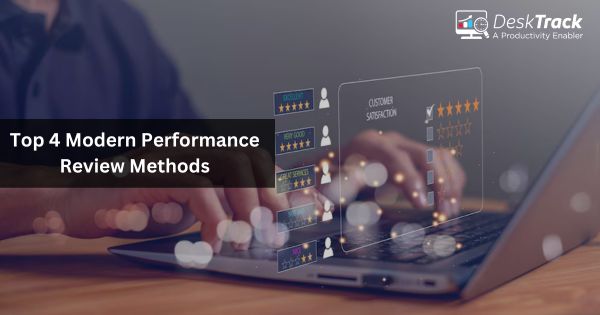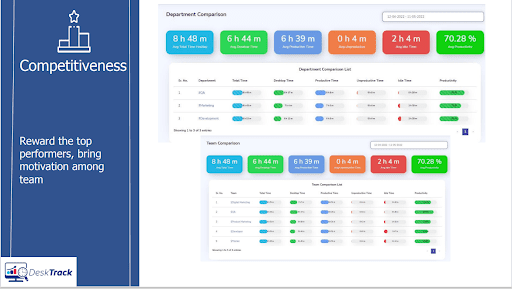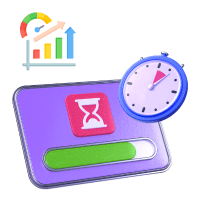
On average, an employee spends 9-10 hours of the day at work and gets his performance review report periodically. But, wait. What do you think? Is this process seamless, unaffecting the ones who receive negative feedback at work, even if they work day in & day-out?
The answer is NO. The process & the result are not always positive for everyone.
I want to take you through some real-life questions of employees, who have a hard time during their performance review process.
- How bad is it to get negative feedback in a performance review?
- What can you do if you receive a poor performance review that you feel is actually intended to get you to quit or get terminated?
- I was given a “doesn’t meet expectations” rating in my annual review. My manager never told me anything throughout the year. Should I leave?
I am sure either you or someone you know might have to come across such a hard time during the performance review.
Therefore, it’s worth learning from scratch about performance reviews, methods adopted to do the latter, and how you can self-evaluate yourself before your performance is reviewed by someone else.
Performance Review: Definition

Performance review is a process of evaluating employees’ work performance and making improvements through suggestions. You might have heard of managers playing a major role in performance reviews. However, it’s not a necessity at all. HR, psychologists, supervisors, and even employees can become part of the process of performance review.
Now, what do you think are the major skills that are reviewed during the performance review?
Is it only hard skills or technical skills or soft skills, like communication or time management, or both?
Well, of course, the performance review is the holistic evaluation of an employee. Therefore, employee’s hard skills & soft skills are evaluated.
Now, let’s move on to the methods of performance review, which remains a basic question in an employee’s mind when he receives the result.
Methods of Performance Review
However, every organization may have its own methods of performance review, but below are some important & prominent methods of performance review:
- 360-degree feedback
- Forced distribution
- Assessment center
- 720-degree feedback
1. 360-degree feedback
Traditional methods of performance appraisal included seeking feedback from a single manager or supervisor. 360-degree feedback on the other hand involves collecting feedback from multiple resources.
Now, let’s take a fair idea as to who can be these multiple resources. These resources can be individuals linked to the employee under performance review. Some of them are mentioned below:
- Colleagues,
- Vendors,
- Peers,
- Clients, and
- Customers.
Needless to say, since these sources are in close communication with the employee, on an everyday basis, therefore they become an authentic source of evaluating the employee. The sources are kept anonymous during the process.
Let’s have a look at an example of what questions are framed for performance evaluation.
Aleksandra Babic, HR generalist at CAKE.com reveals the question “Does the employee effectively communicate with co-workers, managers, and customers? How often? How does the employee react to negative feedback? In what way could the employee contribute to better communication? Are they open to questions, suggestions, or proposals?”
But again, not every method is perfect, whether new or old. Therefore, let’s have a look at the pros & cons of this method.
Pros of 360 degree method
The benefits of 360-degree method are:
- Fair chances of receiving unbiased employee feedback, as there are different sources of data
- There are more chances of discovering issues due to which an employee might have been suffering for long, in his work performance.
- Enhances teamwork & communication
Cons of the 360-degree method
The drawbacks of 360 degree method are:
- The method is not practical for small organizations where there are few sources of collecting feedback
- Processing data from all sources is time-consuming
- Besides, Steve Lovig, HR consultant at Flex HR says “Peers and others the employee works with are often hesitant to say anything negative since they “THINK” — whether true or not — that their input will impact the amount of increase other employees might be eligible for. People don’t want to keep others from getting an increase.”
2. Forced Distribution
In this evaluation technique, employees are categorized into 3 categories, i.e. Top, poor, and average performers.
This technique is more like a comparison. Instead of predetermined standards, employees’ performance is evaluated with comparison to each other.
Here are the mentioned parameters that are kept into consideration while doing forced distribution:
- Quality of work
- Attitude
- Knowledge
- Cooperation
- Dependability
Based on how employees perform, they are categorized into 3 groups, where such distribution is called the 20-70-10 formula:
20% of employees are called A performers (Top performers)
70% of employees are called B performers (Average performers)
10% of employees are called C performers (Poor performers)
Make Your Workday More Productive
Time tracking and work management can help you reach your goals faster.
Try 15 Days for Free

Pros of Forced Distribution Method
Below are mentioned benefits of the forced distribution method:
- This method brings consistency in performance measurement, irrespective of the number of workers in an organization.
- This technique is a great aid in exploring the leaders of the organization. Adopting this method, the top performers can then be trained for their future leadership positions.
- Easy to implement performance review method.
Cons of Forced Distribution Method
Now, it is also important to consider the drawbacks associated with Forced Distribution Method:
- Unhealthy competition & conflicts among employees are very likely to be created
- Employees falling in the C category cannot very easily accept the fact of delivering underrated performance
- Some organizations tend to use this method when they are planning to downsize.
Besides, according to Steve Lovig, “The Forced distribution method forces managers to rate a certain percentage of employees as top performers, a larger percentage as average, and a certain percentage as not meeting expectations, regardless of the true performance of the employees. Many may feel the system is unfair; they are being categorized as ‘not meeting’ due to the ‘curve’ (forced ranking), instead of their actual performance.”
3. Assessment Center
This technique of performance review is more like an amalgamation of various types of exercises. The idea behind this method is to check how an employee behaves in a given situation or role & how these situations affect his work.
Here are some exercises evaluators use in this method:
- In-tray exercise – This exercise relates to tasks that mimic real-world work situations.
- Presentation exercise – In this exercise, employees are given topics on which they have to give presentations.
- Group discussion exercise – A group of 4-8 employees is given a task of solving some physical or theoretical problem.
- Competency-based interview – Here, the candidates have to describe situations wherein they have showcased qualities like leadership, teamwork, etc.
- Role-play exercise – This exercise calls for playing a hypothetical role wherein a candidate is asked to explain how they would work when given a certain position, for instance position of a CEO.
Pros of the Assessment Center Method
Let’s have a look at the positive aspects of the assessment center method:
- The data collected from these exercises make the selection or review process more fair & accurate.
- The skills showcased by the employees cannot be fake, but a true reflection of their current & future performance.
- Such a method is very appropriate for companies who either are recruiting a large number of employees or hiring candidates remotely.
Cons of the Assessment Center Method
Now, let’s take a quick glimpse at the drawbacks of the assessment center method:
- Time-consuming.
- Expensive as it includes professionals from multiple industries.
- Not suitable for all job roles.
4. 720-degree feedback
The 720-degree review is nothing but 360-degree feedback done twice. In this performance review method, there are two rounds of feedback:
- In the pre-round, the employee is given feedback on his work performance (setting & achieving goals), collected from multiple sources like (management, customers, etc). Further, the management can provide training on the skills that are lacking in the employee.
- Then, in the post-approach period, the management evaluates if the employee was successful in achieving the goals on which he was trained. Based on it, the employee’s further feedback is generated.
Pros of the 720-degree method
Let’s have a look at the positive aspects of the 720-degree method:
- A proactive approach to bring out the best in an employee.
- This method leaves less scope for discrimination, & subjectivity.
- This is a unique method where an employee receives feedback & guidance to improvise on his goal-setting skills, hence reducing the chances of errors.
Cons of the 720-degree method
But again, this method too has drawbacks associated with it:
- The process is very time-consuming, being an unsuitable choice for companies that have time constraints.
- Additional funding is required to carry out 2 rounds of reviews.
- This method is not suitable for small & medium companies.
- The results may be inaccurate due to the involvement of multiple people.
Performance review: Is it possible to use more than one method?

It is not necessary to use merely one method of performance review. Instead, you can use a combination of those methods.
Let’s learn what Aleksandra Babic has to suggest on this “Our company uses the 360-degree feedback method and the assessment center method. From our point of view, these two methods have proven to be the most objective when it comes to assessing work performance. The data obtained from these methods are easy to process and directly represent our expectations as an employer and can easily be compared with what the employee actually did and what the quality of the work was.”
Besides, an experienced recruiter Daniel Evans suggests taking a hybrid approach to enhance employee performance. He says “We utilize a combination of 360-degree feedback and MBO. This hybrid approach fosters a well-rounded evaluation, aligning individual goals with overall organizational objectives. This method has proven effective in enhancing employee performance and development.”
Wrapping Up!
Not only these methods but also you can take help from solutions that make your job of performance review easier. Well, I can suggest you one of those solutions, known as DeskTrack.
DeskTrack’s features like Employee monitoring, Time-tracking, Application & URL tracking, project-time tracking, and more aid to the process of performance review. To get a customized experience in this process.







